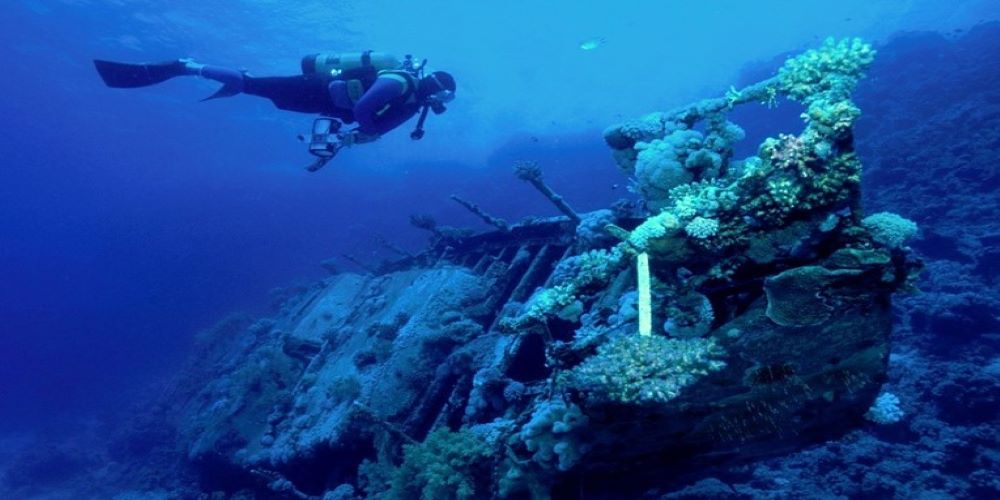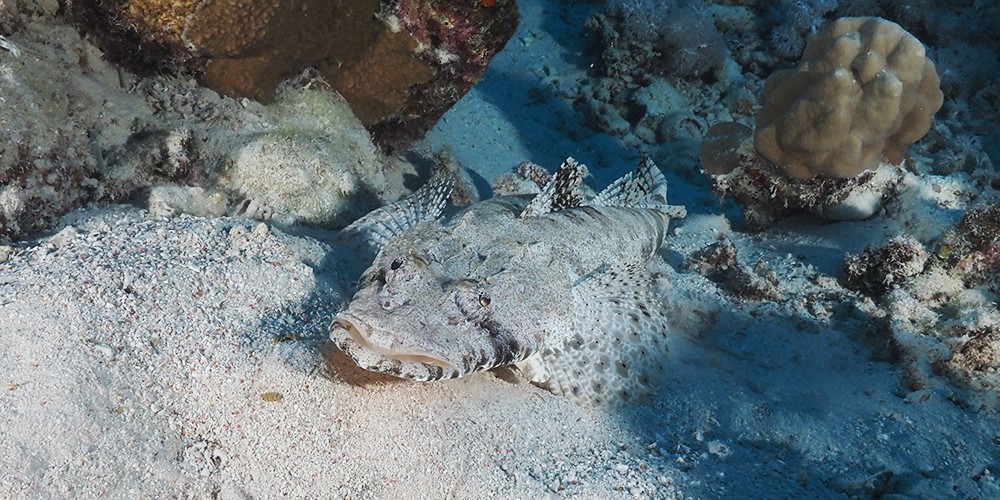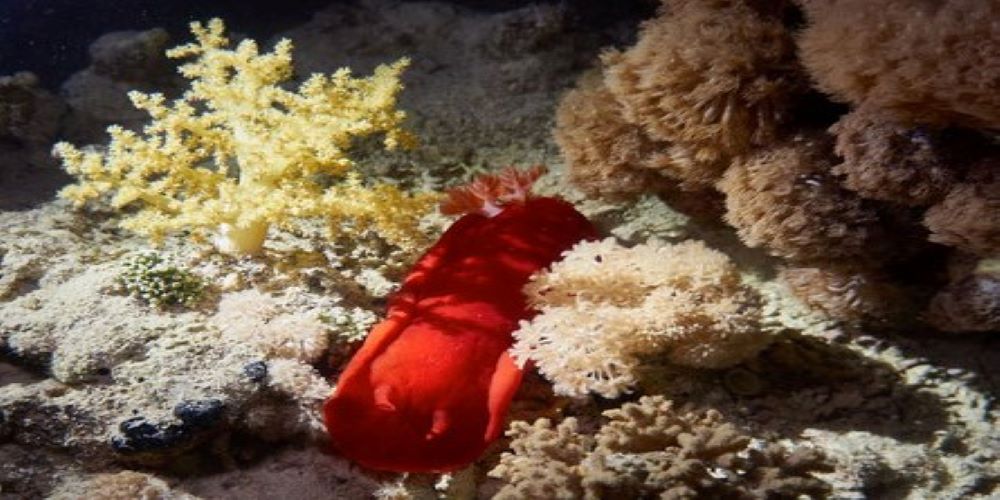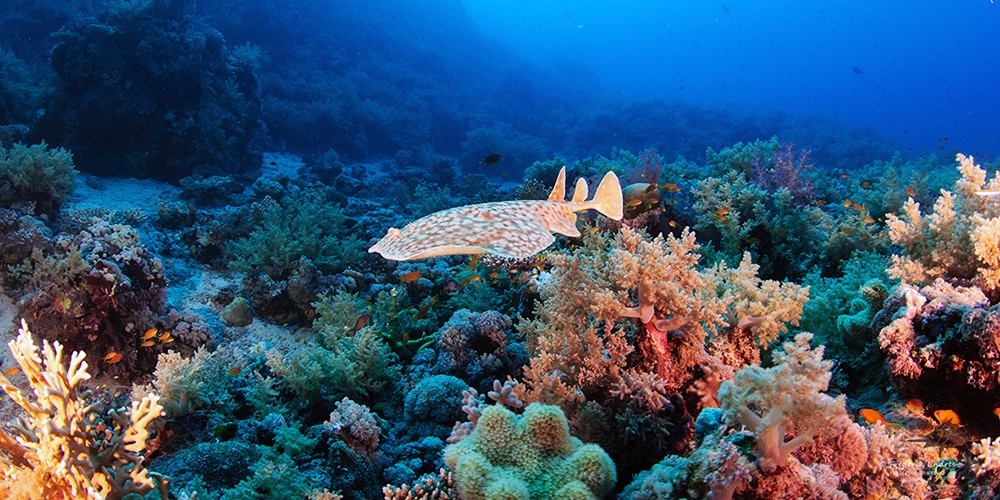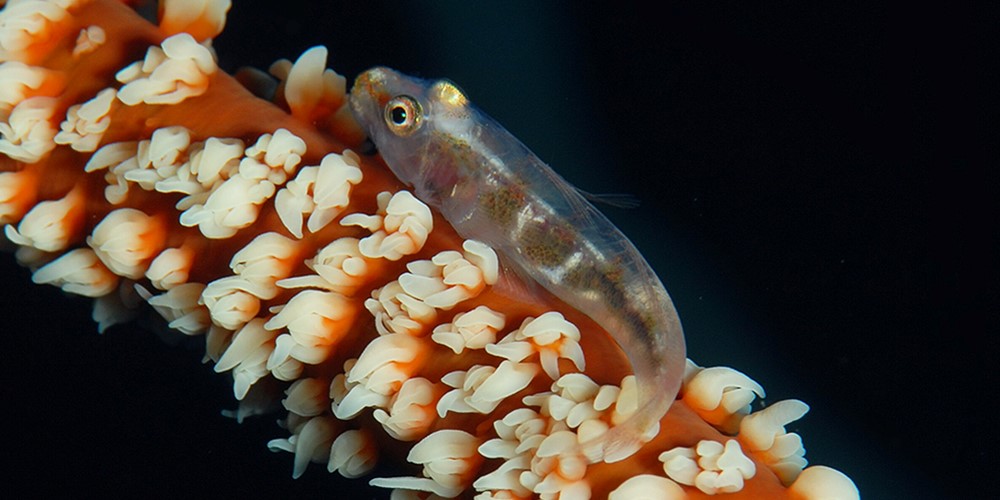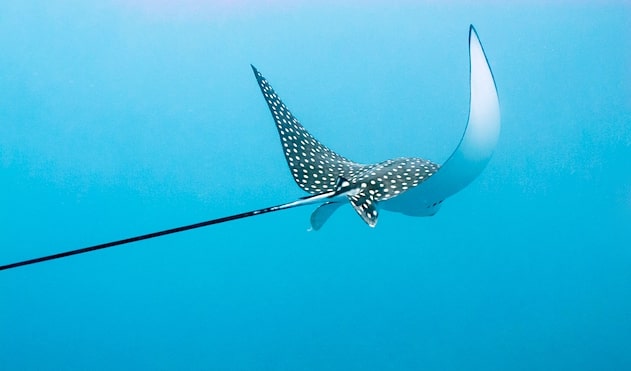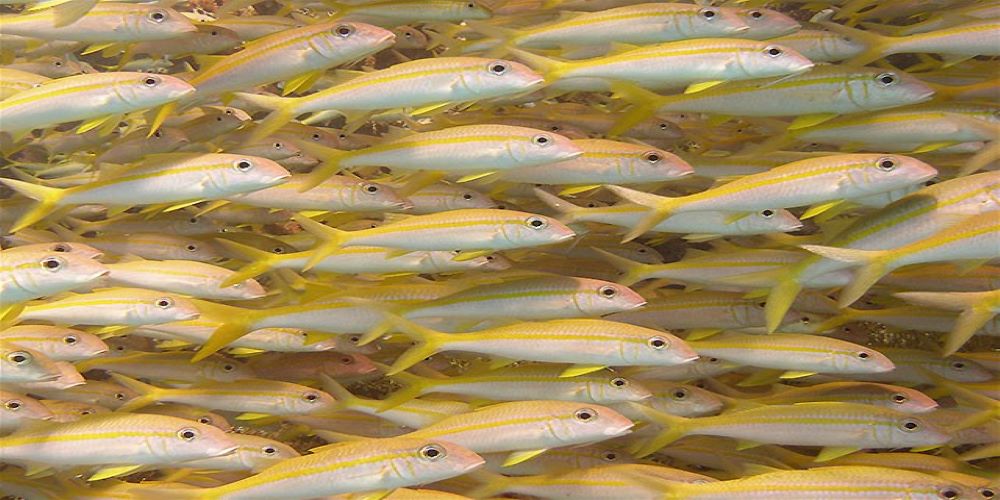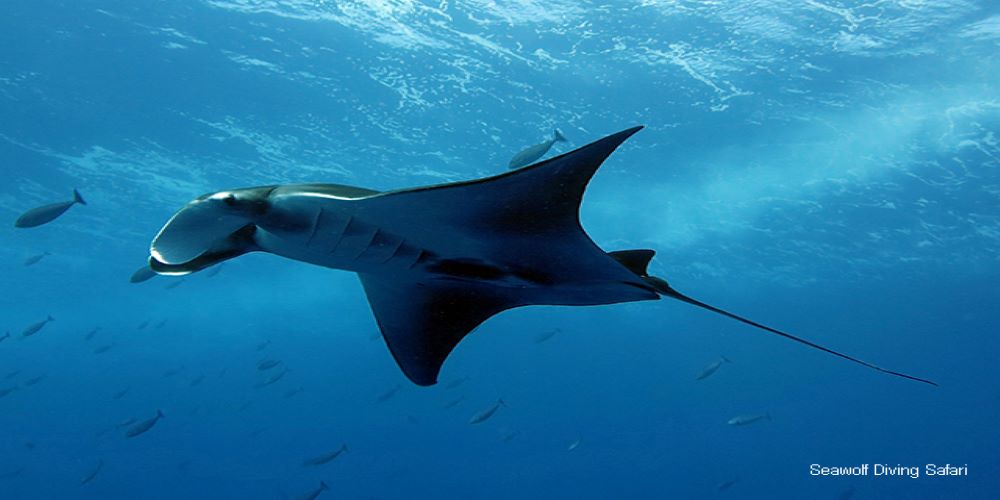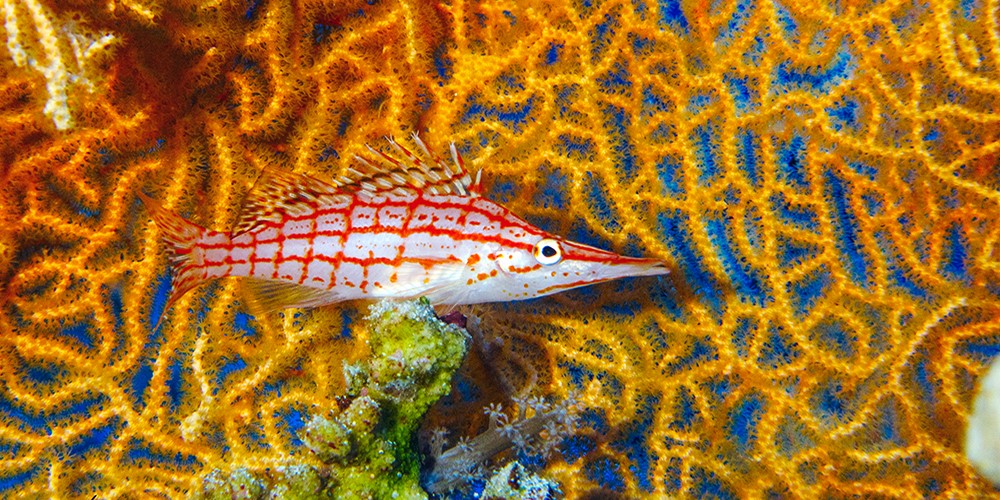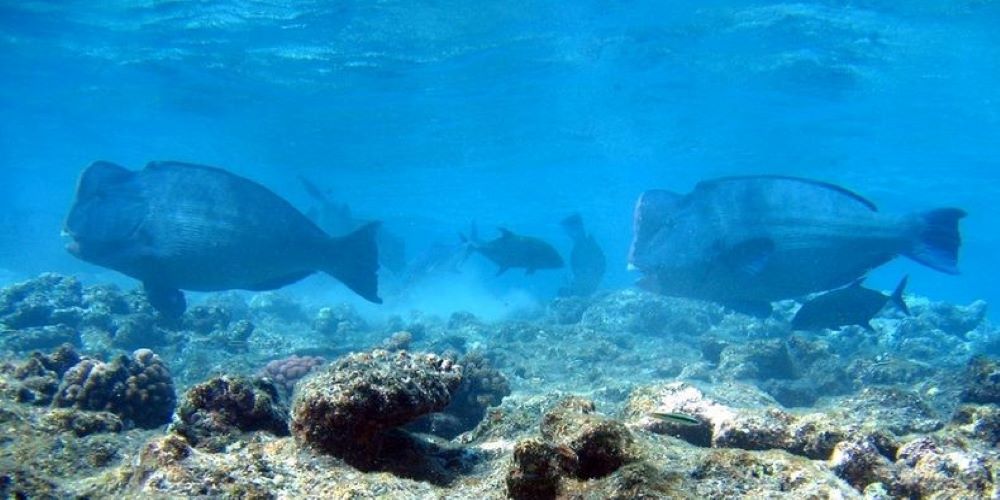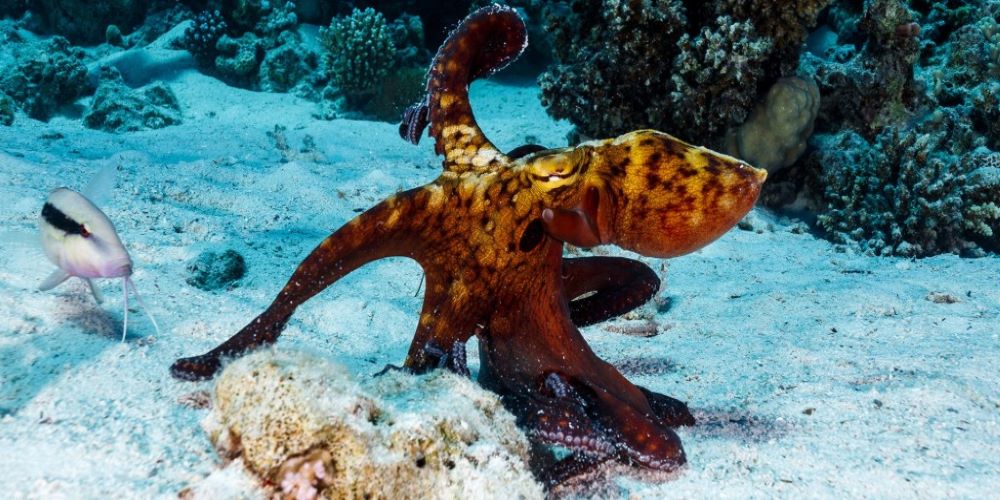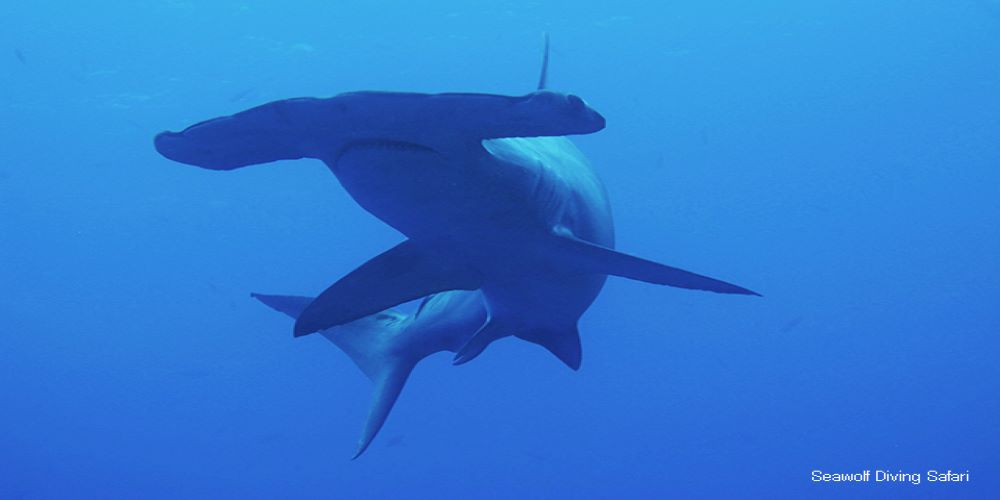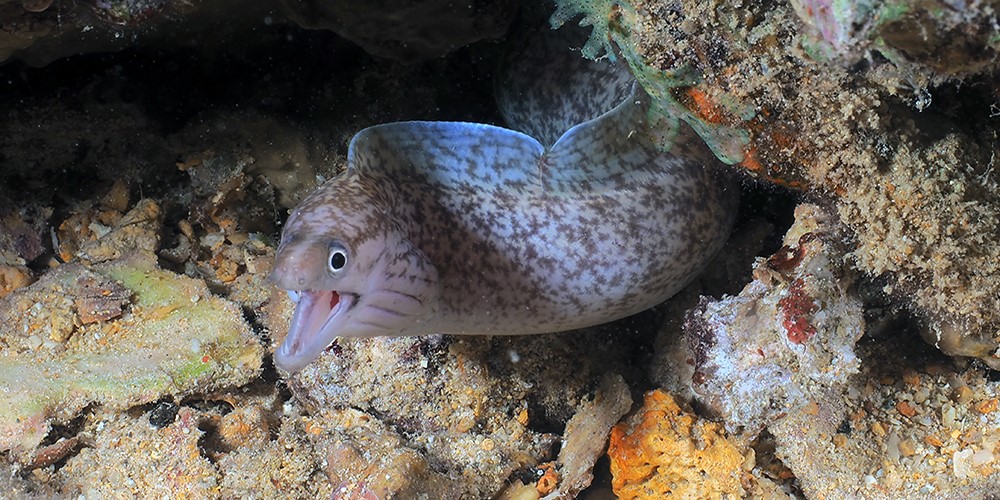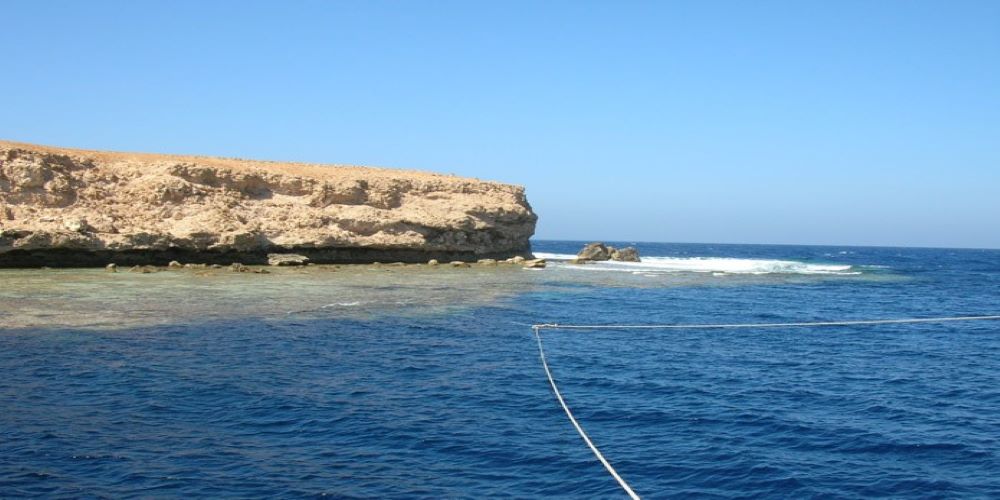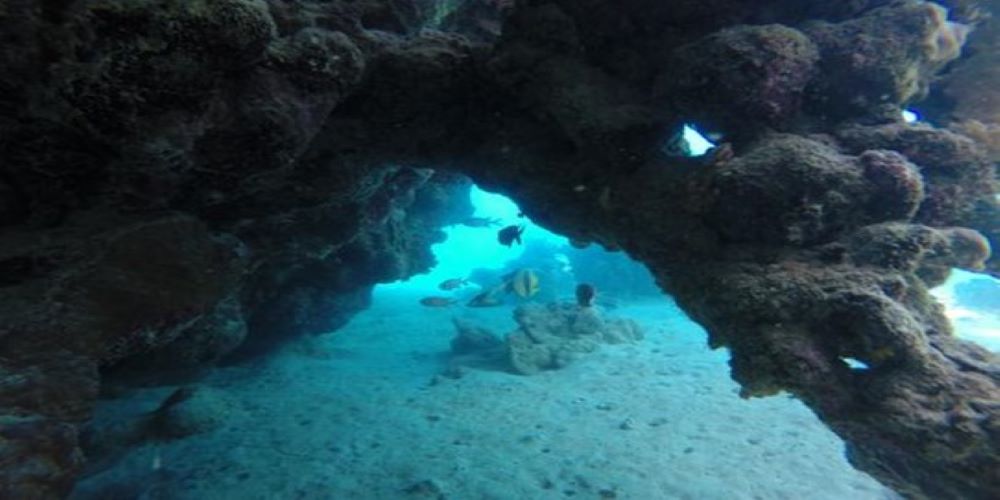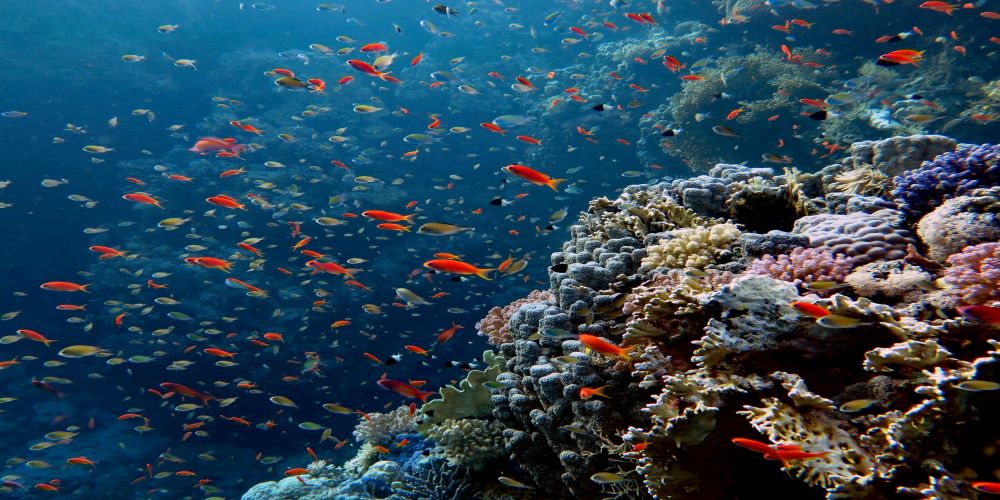Red Sea Highlight
- This liveaboard offers challenging dives, fascinating drop-offs, beautiful coral landscapes and lots of big fish.
- Brother Islands, Daedalus & Elphinstone is a must for all hardcore Red Sea divers! The route takes you from Hurghada to the Brother Islands with its wrecks AIDA and NUMIDIA as well as the chance of big fish sightings like hammerheads, grey reef sharks, thresher sharks, oceanic white tip shark and manta rays. After the Brothers, we cross over to Daedalus Reef and are sure to encounter the school of hammerhead sharks at the northern tip of the reef. Dolphins, oceanic white tip sharks, thresher sharks and manta rays are often seen here. The next stop is Rocky Islands and the island of Zabargad. Beautiful drop-offs with the chance of big fish and dolphins await us at Rocky Island. Encounters with manta rays and oceanic white tip sharks are possible. The next day we reach the St. John`s reef plateau. Coral gardens, caves and caverns await us, as well as small and larger reefs and drop offs with fantastic growth. We will also visit other highlights like Elphinstone Reef. And further north we will come to top spots such as Panorama Reef, Shaab Sheer with the famous Salem Express and some more dive sites.
Expect to see
Abu Dabab
A unique structure makes this reef so remarkable: there are notches and small caves, also a stunning coral garden. All kinds of emperor and banner fish are at home here, but also reef sharks. Due to its location and its maximum depth of 16m, Abu Dabab I is excellent for relaxed day and exciting night dives.
In the south, almost exactly in the middle, there is a single block. There you will see bright red lionfish, as well as feather stars and at night basket stars. In addition, dolphins keep passing by in the south. In the southeast there is another collection of ergs with soft and hard corals, around which there are occasional hawksbill turtles and sharks.
To the north is the famous "Heaven one". Many stories are told around this wreck. Not far away you will find anemone colonies and a cave system overgrown with ancient corals, before diving into two lagoons on the west side with mighty corals and schools of barbels and snappers.
On the west side, an ancient coral formation stretches south with some boulders where reef sharks like to sleep. At the edge of the reef you can find remains of amphorae.
Elphinstone
From Marsa Alam the boat goes about one and a half hours north to Elphinstone Reef! The reef top of Elphinstone Reef lies at a depth of between one and three meters, depending on the water level. Strong surface currents and lots of boat traffic make snorkeling here impossible.
Divers, however, can dive right into a challenging treat! The reef is known for its exceptional biodiversity and, of course, sightings of large fish. In the north we dive on a sloping plateau from 18 to 40 meters and in the south on the underwater terraces. The west and east walls drop off steeply into the depths. The Elphinstone reef has a total length of about 600 meters and a width of 70 meters.
In large numbers we can see hard and soft corals in all colors. In addition, there are turtles, moray eels, loceanic white tip sharks, hammerhead sharks and pretty much everything that the Red Sea has to offer.
Big Brother Island
The Big Brother has a length of 200m and a width of 60m. It is almost perpendicular to the north-south direction and is a steep-walled reef except for the eastern plateau. On the island you usually have the opportunity to stretch your feet, smoke a shisha with the lighthouse keeper or buy small souvenirs and enjoy the view from the lighthouse. This can change depending on the mood of the military.
The wreck of the "Numidia" lies diagonally on the reef from 15m to 75m depth. The general cargo ship hit the west side in 1901 after a navigation error. Its cargo consisted of rails and railroad wheels. It is spread around the wreck. The overgrowth of the wreck stops almost abruptly at 40 meters.
The Numidia is one of the most beautifully overgrown wrecks in the world.
The "Aida", which nestles against the reef on the southern side at a depth of 30m to 65m, has been resting there since she ran aground on the fringing reef in rough seas in 1953. She was to bring personnel for the lighthouse and material for the island. Storms in early 2010 have left the wreck a bit battered.
Around the western end there is usually high wave and some current. If it is possible to dive there in the afternoon, you have the chance to see gray reef sharks and between the wrecks hammerhead sharks from time to time.
On the eastern plateau you can see thresher sharks, also gray reef sharks can be seen there very often. Further on the north side there are nice notches and the reef wall is beautifully covered with soft and hard corals. In addition there are all kinds of fish.
To the south is the jetty that supplies the lighthouse. On both sides you will find small notches in two to five meters depth with gigantic schools of fish, hunting cornetfish, juvenile napoleon wrasse. In the open water area, hunting mackerels, tunas and barracudas often pass by.
Numidia
The Red Sea has a width of 180 km at the Brothers, yet the crew managed to hit this small island - shortly after two o'clock in the morning, Captain Craig was rudely awakened by the violent impact of the ship on the reef at the northern end of the "Big Brother".
The "officer on watch", Merwood, had probably fallen asleep at the same time as his boss. The resulting course then led the ship in truly somnambulistic safety right into the middle of the reef.
The ship was thus stuck in and on the narrow fringing reef and all efforts to free itself failed.
In the following days, attempts were made to tow the Numidia free with the help of other ships, but this failed.
Captain Craig was left with the thankless task of remaining on the desolate island for several more weeks to supervise the salvage of the cargo.
Probably in the winter storms of 1901/02, the ship was then torn from the reef and it sank for good.
Aida
Originally intended for the Egyptian Port and Lighthouse Administration, she was later used for ferry and supply work in Egyptian ports.
The AIDA was to provide supplies for the Egyptian soldiers who were always stationed on the southeast coast of Big Brother Island on a bi-monthly basis. She carried fresh water, food and the next guard shift.
On September 15, 1957 in a heavy storm, the captain, ignoring several warnings, decided to go anyway and tried to moor at Big Brother. He struck the reef.
The AIDA began to sink rapidly and the captain had no choice but to abandon ship with his crew. A lifeboat was able to be lowered and all 77 sailors were still safely picked up and set down on Big Brother before the AIDA sank.
The dive on the AIDA is an extraordinary dive, no matter how much experience you have as a diver. It leaves you wondering how a ship can sink like that and stand on the sloping reef edge, as if parked. Since the ship no longer contains any cargo, one suspects that this has slipped through the wreck and now lies in deeper regions on the ground. Same as, the AIDA stands bolt upright on the sloping reef edge, the highest point at 25 m, the screw at 57 m. Apart from the collision with the reef, the ship is still completely intact.
It has been there for more than 40 years now and is becoming more and more part of the reef, overgrown with corals.
Small Brother Island
Little Brother runs from northwest to southeast at 100m long and 50m wide. To the north, Little Brother runs somewhat wedge-shaped. Its height is 11 to 12m and it is surrounded by a fringing reef that seems to literally guard it. On the southeast side, where the moorings are, the reef drops steeply down to 10m, where there is a small reef nose that turns into a slight slope. It ends with an overhang at 37m. After that, the wall drops further into the depths. There, a lagoon like wall runs from the north to the large gorgonian garden that extends from 18m to well over 40m in the east.
Shaab Sheer
The north side of "Shaab Sheer" is a bit more turbulent, but the south side is like a lagoon and is usually very well protected. We have to reckon with the strongest current on the west side, which faces the "South Safaga Channel". Most divers appreciate the area between three and 15 metres depth because of the quasi "moonscape" of the brain coral garden, nevertheless we find many different reef inhabitants at "Shaab Sheer".
Picasso triggerfish, orange-striped and yellow-fringed triggerfish, parrotfish, pencil filefish and sling jaw wrasses can be found here in masses. In the area of the northern plateau and at the steep wall we can also see bream, bigeye empereor, mackerel, red and black snapper as well as schools of tuna and barracuda.
Panorama Reef
The east and west sides of Panorama Reef drop off steeply, but to the north and south we find very interesting plateaus with lots of life and, how could it be otherwise, a panorama of a special kind. We see nose doctor fish, barracudas, fathead mackerels, moray eels, crocodile fish, eagle rays, napoleons and turtles.
Great mountain corals, large table corals and thousands of anthias can be found on the northern plateau of Panorama Reef. The current is 95 per cent from the north, which means it's often quite "stormy" here. The southern plateau is more protected, starting at a depth of 18 metres and slowly dropping to 30 metres. Here, huge gorgonians grow above the chimney. A large anemone field is just as much a part of it as the almost obligatory sighting of stonefish.
Shaab Shona
The lagoon is formed from a dried up river (wadi) and with a diameter of 150m between 5 and 45m deep. You can still see the wadi in the middle as a channel that rises to the north and south. In the north there is a plateau whose edges drop from 14 to over 40m.
The north side is characterized by boulders where you can find ghost pipefish, long-jawed makerels, glassfish and crocodile fish, but of course also as many different coral species. They reach from the reef edge partly down to 20m and are covered with life.
Daedalus
With a length of 600 to 750m and a width of 100m in the north and 300m in the south, Daedalus is a very large reef. In the south there is a lighthouse that guides the ships at night. Here you can shop, stretch your feet or climb the lighthouse. On the north side there is a steep wall, which towards the east on a depth between 18 and 40m changes into several lagoon like plateaus. There in the blue water you can find the hammerhead sharks. Usually, depending on the current, several groups of 12 to 25 animals each can be found.
Almost all boats anchored at Daedalus will send their Zodiacs north in the early morning hours. The best place to go in the water is at the northwest corner.
It is worth - always in sight of the reef - to dive a bit into the blue water and just wait at 20 or 25 meters depth. If there is nothing to be seen, dive calmly at the same depth in southeast direction around the reef top. On the east side there are two lagoons, near which the hammerhead sharks usually come out of the depth. At the first moment you will usually see only one animal. It will dive past you at some distance and lie down on its side to show its strength. Stay where you are. Do not go deeper or follow the shark - it will disappear into the depths. However, if you have waited patiently, the other animals in the group will come out of the depths and attempt to get close to you. If you get too close to them, they will dive away. But if you stay where you are, or even ascend a few meters - yes, yes, the NDL time - the animals will usually follow. Then you have the opportunity to enjoy this spectacle for up to 20 minutes.
Nearby is also the so called "Manta Point" with its colorful reef wall. The whole east side is a first class spot. You should always look below you into the depth or into the blue water - there will always be big hunters in sight.
The west side with its notches is home to one of the largest anemone colonies in the Red Sea. More than 200, with their red outer shell and delicate yellow to greenish coloring, have attached themselves to the reef on a width of just 10 meters in the narrowest of spaces. This colony reaches down to a depth of more than 50m. But further south it finally takes your breath away. There sits a gigantic hard coral, at whose sight one feels tiny: Like a waterfall it falls down from 4 to 19m. Unfortunately, the first damages are already visible.
In the south of Daedalus there is a plateau with big and small boulders - a good place for the thresher shark. Nearby is rubble and steel from the lighthouse. Moray eels and groupers slumber in it. You can also find turtles, gray reef sharks, hunting mackerel and tuna, and of course stonefish and snails.
At the southern drop-off edge of the plateau you can find a small colony of anemones. The special thing about it is the coexistence of different colored species in a small area. In the upper area one often encounters deep sea sharks, such as the Oceanic white tip shark and the silky shark.
Daedalus is also an outer reef and marine park. Apart from the general regulations, anyone going diving here should be able to cope with changing, sometimes strong currents, high waves and Zodiacs. In addition, a deep dive specialty is recommended.
Shaab Sharm/Gota Sharm
Gota Sharm has a length of 250m, a width of 100m and runs in a wedge shape from west to east. There are plateaus at both ends. The rest consists of steep walls that reach more than 100m into the depth. The plateaus are 20m (close to the main reef) to 35m deep (in the outer area). The current usually comes from the northwest in the morning and from the north at noon. Despite this predictability, you should pay attention to it, because it can get very strong and you run the risk of being blown off the plateau.
On the eastern plateau you can find the longnosehawkfish in a gorgonian, lionfish under table corals, barracudas, reef sharks, schooling fish and two cleaning stations: one in the middle of the plateau for young tuna, the other, by a large block on the south side, for surgeonfish.
On the east plateau, the current can cause turbulence that makes diving difficult.
The western plateau is narrower than the eastern one and there is also a cleaning station here. On its northern side the current usually meets Gota Sharm. So a good place for big fish like the hammerhead shark. Pretty much opposite, on the south side, manta rays have been spotted, but it is more likely to encounter reef sharks, mackerels, tuna and barracuda.
Abu Galawa Kebir
At Abu Galawa Kebir there are lagoons and several side reefs that offer everything there is to see in the Red Sea. Blue staghorn corals, wonderful landscapes.
Besides the "Rosalie Moller" and the "Numidia", the steam tugboat of Abu Galawa, the "Tien Hsing", is one of the most beautiful shipwrecks in the Red Sea. She was a harbor tug built in Shanghai in 1935. With a length of 36m, a beam of just over 7m and a draft of about 3m, it was a rather small ship for these purposes. On October 26, 1943, the tug sank and now lies at a depth of 12-13m in a slight angle on the west side behind the canal.
The wreck is easily visible on the starboard side, but less so on the port side, so many corals grow on it!
The coral garden on the west side consists of mountain corals. In the upper part, the cuts and channels are overgrown with table corals. Also here you can dive great at night.
Abu Galawa Soraya
A sailing yacht from the USA sank at "Abu Galawa Soraya" in 1980 and has since been colonized by very many soft and hard corals. An incredible sight in 17 meters depth on a length of 15 meters. But not only the great overgrown wreck convinces here.
Needlefish, blue spotted stingrays, red sea fusiliers and free swimming giant moray eels can be spotted and admired at this dive spot with a little luck. What will please many - "Abu Galawa Soraya" is also suitable for a night dive and what better way to see the various wreck dwellers than at night!
Equipped with light we can see inside the wreck also during the day the many glass fish that have made the yacht their own for a long time. Also on the sandy bottom many surprises are waiting between the coral towers and blocks.
Sataya Gota Soraya
"Soraya" means "small". This tells us that we are on the sister reef of the larger Sataya Gota Kebir. The water depth in the area to be dived is 20 to 25 meters. The reef has a length of 250m and a width of about 70m. The boat usually moors in a small lagoon in the southeast of the reef. However, depending on the current, there is also the possibility to moor the boat in the southwest at a notch of the reef. The Sataya area almost always has current from the north.
The mooring in the southeast, in the lagoon, is also one of the most beautiful places to dive in the midday. Very few people dive here and you get the impression that you are entering the water shortly after the coral garden is formed.
The most common diving tours, due to the current from the north, start with the Zodiac of course in the north. Then one has the free choice whether one dives left or right hand side. Here you can practice navigation and you have a dive of about 60 to 70 minutes in each direction. There is also a small path in the north through a cave into a lagoon. This is covered with mountain corals. The whole area is full of huge mountain corals, large table corals, leather corals and soft corals. There are a lot of juvenile fish, large schools of snappers, bigeyes and barbels. You can also find snails, as well as dolphins and young reef sharks.
There is another coral garden in the northwestern area, behind a sandy road. It consists of old and new coral formations and slopes down to 40m in the north.
Sataya Gota Kebir
Sataya Gota Kebir - "Kebir" means "big" - is located west of the main Sataya reef. The water depth in the area that is dived is from 5 to 25m. The reef is about 140m long and has a width of about 80m. The mooring is well protected, usually right by a plateau with a depth of 5 to 15m. Since the current, except in autumn, actually always comes from the north, it is an ideal day and night mooring place - perfect for exploring the plateau in the dark.
To the south, the plateau is at 5-11m, dropping to 15-18m on the outer sides. At night it is teeming with life. There is almost a guarantee of Spanish dancers, this is what this place is known for. You can also find many kinds of shrimps, rabbits fish, parrot fish in cocoon, flute fish, lion fish, gorgon heads and many more.
In the west you will find some bigger blocks at 22m. Except in the northwestern area there are actually small and big blocks everywhere. You will find among others flatworms, moray eels, small groups of hunting fish as well as slugs.
In the north there is a lagoon with a beautiful coral garden, swarm fish and an anemone colony.
Shaab Claude
Shaab Claude is about 150m long and 60m wide with a maximum depth of 24m. Boats usually anchor in the south, because there is the cave entrance in 10m depth. Also most of the fish can be found in the southern part of the reef. Here live e.g. batfish, triggerfish, bannerfish, barbels and snappers. Also big napoleon wrasse are not rare.
Often a current from the north makes diving on the west side above the coral garden difficult or impossible. After a bumpy ride by Zodiac to the channel and the anemone colonies, you will be rewarded with a nice drift dive on the east or west side.
Paradise Reef
Paradise Reef is connected to Cave Reef in the north by several blocks and has an extension of about 250m by 80m. Around the southern area a drop-off edge falls well over 50m.
To the west, coming from the north, a very nice mountain coral garden extends southward into an abstract erg landscape. These coral towers with a height of 3 to 12m are abstract formations with sometimes threatening appearing gradients.
You can find bumphead parrotfish in the east and eagle rays and reef sharks in the west.
In the south lies one of the entrances to a small cave system. It is recognizable by a cluster of anemones. The cave consists of two large rooms and is partially open in the upper part, which allows the sunlight to penetrate well. In the cave you can find a large number of different snails.
The two lagoons are a real paradise. On the sandy surface gobies and pipefish cavort. Towards the east there is a coral that has grown from the top to the bottom and stops only 30cm above the ground. Behind it begins a colorful coral garden.
Umm Aruk
If you see Umm Aruk on the surface, it is hard to believe that this reef has an extension of 200 by 250m. In the south, from the craggy reef edge, an abrasion edge stretches down to 20m. East of it, two mighty boulders rise to the surface.Behind them stretches a bizarre picture of two dozen coral towers, 6 to 9m high and 2 to 4m in diameter, where corals and fish fight over the best spots. If you want to see banner and lemon butterfly fish in large numbers, you should definitely dive the north side. In the sloping lagoon like grooves you will often encounter juvenile whitetip reef sharks.
On the west side there are more astonishing boulders. Behind them, numerous ergs shooting up like mushrooms. Between them live, well protected, eagle rays and gardeneels.
The current is unstable and can come from all directions. However, due to the swirls between the blocks, we can use that to our advantage.
St.Johns Gota Soraya
The reef reaches well over 100m in depth and has a chimney in the south at 9m water depth, which is covered with black coral.
The west side is a wall with deep notches and bulges. There you will find a block that seems to have grown out of the reef, reaching from 22m to 9m below the surface. In the depth a few gray reef sharks pass by from time to time.
In the north, St. John`s Gota Soraya has a reef spur after a steep wall of 15m, which runs down with a slope well over 70m. It is covered all over with gorgonians and delicate sea whips as well as huge soft coral fields. Gray-black snappers and reef sharks are common there.
On the east side you will find schools of snappers and barbels in the wide niches. Often you also get a manta ray visit, because there the current meets the reef.
St. Johns Gota Kebir
St. John`s Gota Kebir is 250m long and 120m wide. The north ends in a drop-off that drops to 35m in places and opens into a small ledge before plunging further into the depths. The west side drops to 20 to 25m with overhangs and deep notches, then with a slight slope into the outer area where it disappears into the depths. On the east, the wall drops 20 to 30m and then turns into an overhang. The northern part falls directly into the depth. On the way there are huge gorgonians with a diameter of 3 to 4m.
The southern side is covered with coral fields. The reef wall there runs vertically down to the second plateau at 55m depth. On the plateau you can watch manta rays, gray reef sharks and hammerhead sharks as they make their moves. On the west and east side, behind the plateau at 9m, there are caves. Both run almost identically in an exciting large diameter circular path. However, please watch out for things that can fall down due to your exhaled air.
Shaab Maksur
It is 350 to 400m long and has three plateaus, one of them - untypical for an outer reef - on the west side. The currents are similar to Elphinstone, as both reefs have almost exactly the same orientation.
The south plateau actually consists of two levels. The first ranges from 18 to 35m, the second from 35 to 42m. Both have a length of 50 to 60m and a width of 40m. At the end, the reef descends steeply to 80m, then continues into a slope to 120m before disappearing fully into the depths.
The west side has something special, because bordered by a coral garden and a block at the end there is a small lagoon in the middle of the plateau, which is very nicely embedded with a depth of 13-16m and a width of 20m. Here lie some pieces from an old safari boat that hit the reef after 14 days in service. The riggings were thrown overboard and the hull was taken to the shipyard for reconstruction. Meanwhile the reef has grown very nicely around the wreckage.
The eastern area is a drop off and to the north there is another plateau at a depth of 20 to 37 meters where there are smaller mounds and a coral garden. Here, as everywhere on this reef, downward currents can occur. At the northernmost point there are two more rocky pinnacles separated from the reef by an 8m deep gap.
Dahra Wadi Gimal
With a width of 350m and a length of just over 3km, Dahra Wadi Gimal is an elongated reef that runs out over several blocks in the north into almost independent reefs. It is well suited for overnight stays and is 5 minutes away from Shelaniat. In the south you have a narrow plateau at a depth between 5 and 14m with several small coral blocks from 1 to 2m high - excellent for a night dive. The plateau has a width of 30m before it goes over several steps into the channel towards Wadi Gimal Island. Here you can see one of the largest parrotfish species, the bumphead parrotfish.
On the eastern side, separated by a coral outcrop, are coral towers 9 to 12m high and 2 to 3m in diameter. They have purple soft corals mixed with hard corals in the upper part. This is an ideal area for glassfish, lionfish, giant sea cucumbers and sole.
Towards the east you will come across a huge labyrinth of all kinds of corals.It has an impressive height of 10-15m and consists of table corals with partly 4m diameter, ship-sized mountain corals as well as huge lettuce corals. Must see!
Sheleniat
The reef has a width of 150m and a length of 200m. With a depth of 16m it belongs to the very shallow dive sites. The corals here are mostly only 50cm high. The 2 to 4m high hills are the optimal area for damselfish.
On the west side there are two big lagoons, which are connected inside at 6m depth. They are overgrown with stag and mountain corals. On the sandy bottom you will find gobies and crabs living there symbiotically.
The north is bordered by a long block. On the west side, on the other hand, there are four coral mounds from 2 to 8m high.
The east side has an elongated reef wall with single fields of mountain corals and in the outer area isolated 2m high towers. The variety of corals and fish here is indescribable!
To the south are individual lagoons and ancient coral that is home to batfish, large groupers and moray eels.
This is a good night mooring and night diving site.
Around the hills the current often changes and forms swirls.
Shaab Malahi
Shaab Malahi has a length of 100m and a width of 60m. The depth varies from 22m to 6m in the inner area. Only on the east side after about 50m there is a drop-off edge.
The reef is a maze of boulders that enclose the area in an almost circular fashion. Some of them rise 16 to 20m steeply and in the upper area an overhang has formed.
The labyrinth of blocks is most relaxed to dive with a guide, moreover, the diving depth varies often and sometimes extremely, so that the ears have to give maximum performance here.
Shaab Malahi gives you the opportunity to observe the formation of reefs, because due to the weather this reef is always in motion. Here you should watch out for falling objects in the overgrown corridors and caves.
Behind and below the boat is a sandy area that hosts some nice big boulders at about 20 meters depth, running far to the south. To its southeast are two blocks that look like they are connected to table coral. Here and a little further north there are schools of banner fish. But there is a lot to discover in this area in general.
Erg Abu Diab
This spot is typical of the biodiversity of the southern Red Sea, but also known for encounters with large sharks. Often the diver meets groups of hammerhead sharks. But also the encounter with gray sharks and thresher sharks is likely here and with good luck among them also an oceanic white tip shark.
Zabargad
Zabargad has two shipwrecks to offer, both in the sport diver friendly area. On the east side, between 1 - 24 meters deep, you will find a wreck 70 meters long and about 10 meters wide, the name and history of which have long been the subject of speculation. It is assumed that it is a Russian motor freighter that sought the protection of the island after a collision or explosion on board and sank there - the damage in the stern area would speak for this. The vegetation of the wreck suggests a sinking period in the 1950s to -60s.
On the southeast side, there are many cave passages in the upper reef area where, if you are lucky, you can find nudibranchs and turbellaria. On the west side of Zabargad, besides beautiful hard coral gardens, you can dive the remains of the safari ship "Neptuna", which sank here in 1981. On the sandy bottom at a depth of 24 meters you can find evidence of the sinking: a generator, several suitcases, a radar unit and a diving tank. However, there is no trace of the wreck of the ship. Since the reef is only slowly steepening at this point, the safari boat cannot have slipped any further into the depths, so it must be lying somewhere nearby. Presumably, at that time, when the stern was already submerged, it drifted a little further, while the mentioned objects fell overboard. The wreck of the "Neptuna" could not be located until today and thus remains one of those mysteries with which the Red Sea can still come up with.
Safari boats usually seek shelter to anchor on the south side of the island - behind a large lagoon. Around the lagoon, which is about 10-12 meters deep, it descends steeply to depths of over 50 meters. You can reach the inside of the lagoon through numerous passages through the rock that rises around the lagoon and is lush with colorful soft corals.
Rocky Island
The island has an extension of 300m by 80m and has a fringing reef all around.
The south side of the reef consists of overhangs and half caves where very often white tip reef sharks sleep. Even more, the east and west are real Shark Points, because here the sharks are in a current that comes from the north and also brings in huge schools of sardines and their predator, the tunas.
The north, on the other hand, is a deeply indented steep wall with ledges and overhangs. Here one sometimes encounters dolphins.
Around Rocky Island again marine park rules apply and due to various currents it is a very challenging reef.
Cave Reef
With an extension of 400m width and over 1.5km length Cave Reef belongs to the "big boulders" in the north of the St. John's area. It is located about one hour south of Mikauwa/Sirenaka and is a collection of different sized boulders, some of which are connected at the top. This has created a maze of caves and channels at depths of 5 to 12m. They are overgrown with countless yellow fan corals, soft corals and some sponges.
The inner areas are most relaxed to dive with guides - they know the best ways and you can concentrate on the astonishment. Some passages are quite narrow and you should always watch your head and equipment.
The lagoon is bordered in the south by a large mountain coral garden where there are lots of fish species. Among them is one of the most bizarre species of all: the seamoth, a bottom dweller with a rectangular body shape.
Umm Hal Hal
On the inside (west) the plateau is 16 meters deep, while on the outside it drops to 22 - 24 meters. About 80 m further east, a steep wall begins at 30 m, interrupted by overhangs. Hal-Hal is also known as Shaab Quais (Beautiful Reef).
If you are lucky enough to make a dive here, you will be rewarded with a colorful, lively reef.
It seems as if the fish never sleep - they move continuously in the struggle between eating and being eaten. Since the dive site is quite small, you can circle the ergs several times at different depths.
If you dive to the wall and look for big fish, you should be good with your air consumption and have a good sense of direction.
The reef is impressive with its soft corals and sea fans and with a few isolated table corals.
As for the fish life, here you will find the usual reef fish, but these in masses. Leopard groupers, turtles, mullets, script filefish and longnose doctorfish to name a few.
Itinerary
ATTENTION: The tour description is only a suggestion. Which dive sites are dived on the tour depends on many factors, including wind and weather.
Arrival
After arrival in Hurghada or Marsa Alam transfer to the boat.
Check in, dinner and spending the first night onboard in the marina.
Departure
Departure in the morning.
Instruction on the boat,
Diving, safety and equipment briefing.
Dives at Gota Abu Ramada
Night dive at Gota Abu Ramada
Brother Islands
Dives at
Big Brother Island
Small Brother Island
Daedalus Reef
Dives at Daedalus Reff
Daedalus Reef
Dives at Daedalus Reef
Rocky Island
Dives at
Rocky Island
Gotta Kebier
Dangarous Reef night dive
Dangarous Reef
Dives at
Dangarous Reef
Umm Aruk
Night dive at Umm Aruk
St. Johns
Dives at
Gota Roraya
St. Johns Caves
Paradise Reef
Night dive at Paradise Reef
Sataya South
Dives at
Sataya South
Shaab Malahi
Shaab Claude
Night dive Shaab Claude
Abu Galawa Soraya
Dives at
Abu Galawa Soraya
Sheleniat
Night dive at Sheleniat
Elphinstone Reef
Dives at
Elphinstone Reef
Shaab Shona
Night dive at Shaab Shona
Shaab Shona
Dives at
Shaab Shona
Ras Trombi
Mangrove Bay with night dive
Panorama Reef
Dives at
Panorama Reef East and West
Tobia Arbaa
Night dive at Tobia Arbaa
Return
Dive at Abu Soma and Ras Disha
Return to the port.
For safety reasons you should not dive 24 hours before your flight home.
Check out
Breakfast and check out no later than 10 am.
Transfer to the airport or hotel.

 ENGLISH
ENGLISH
 РУССКИЙ
РУССКИЙ
 DEUTSCH
DEUTSCH
_lg.webP)
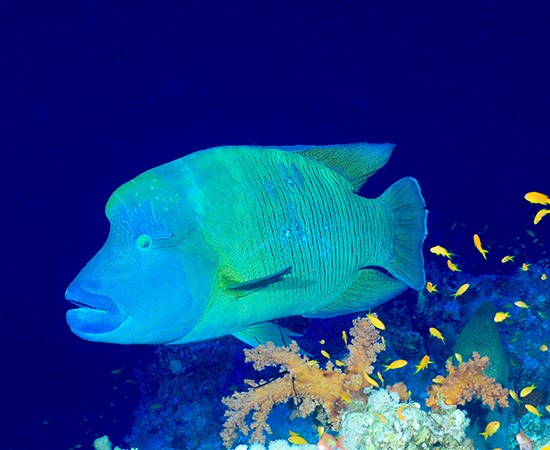
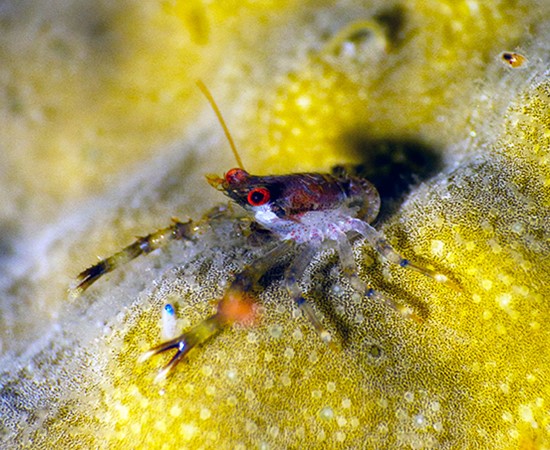
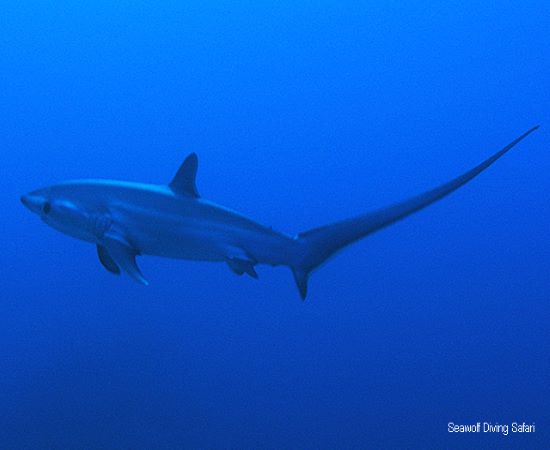
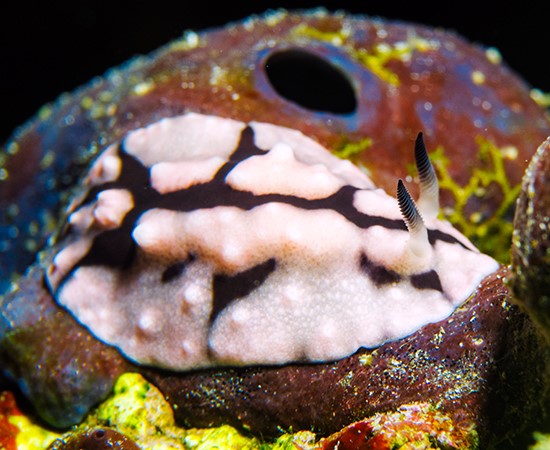
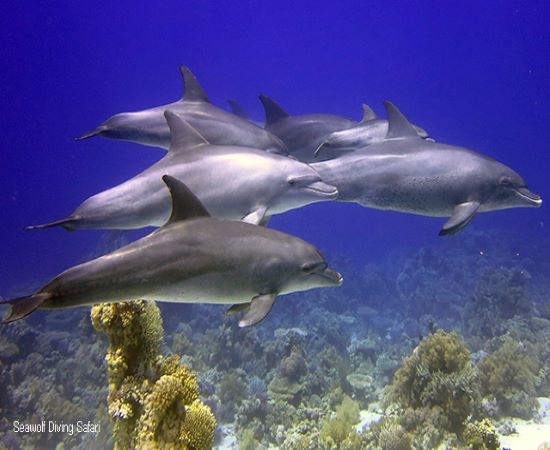
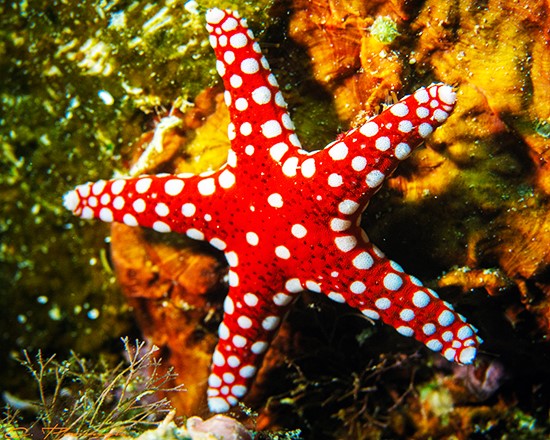
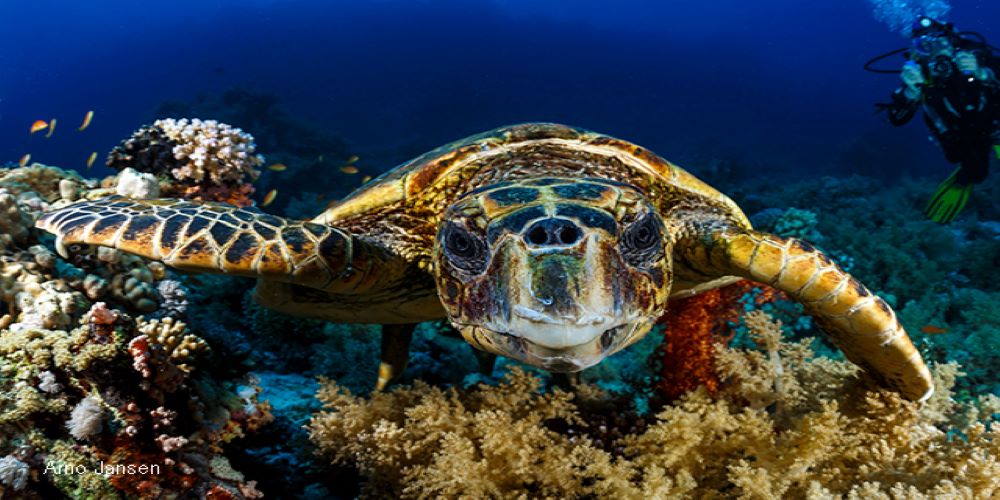
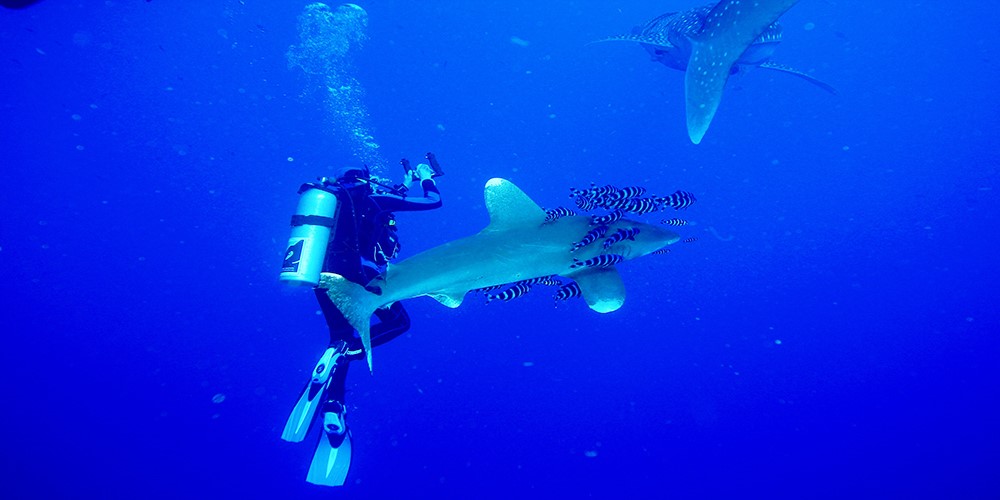
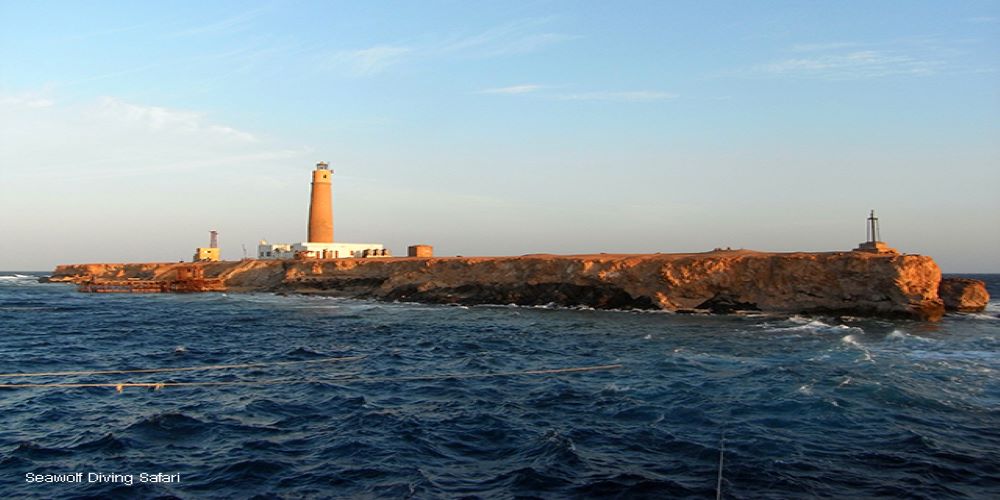
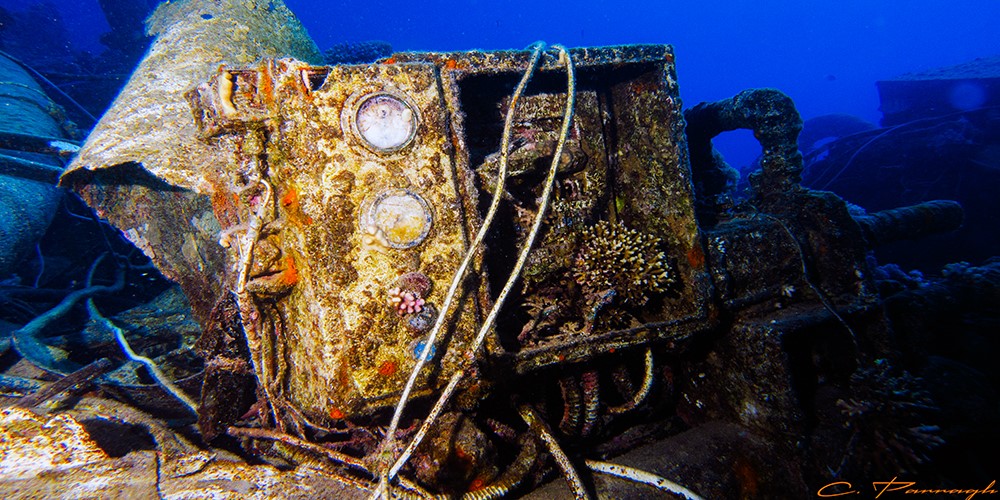
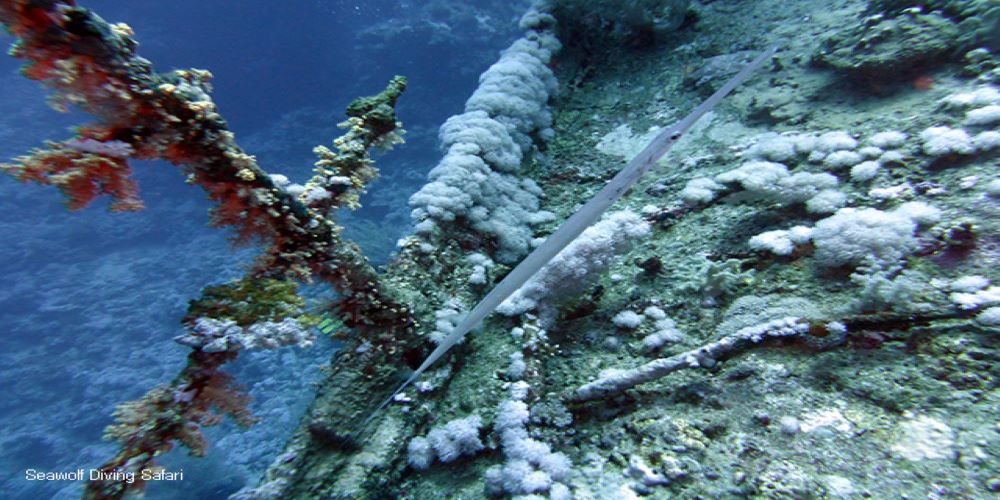
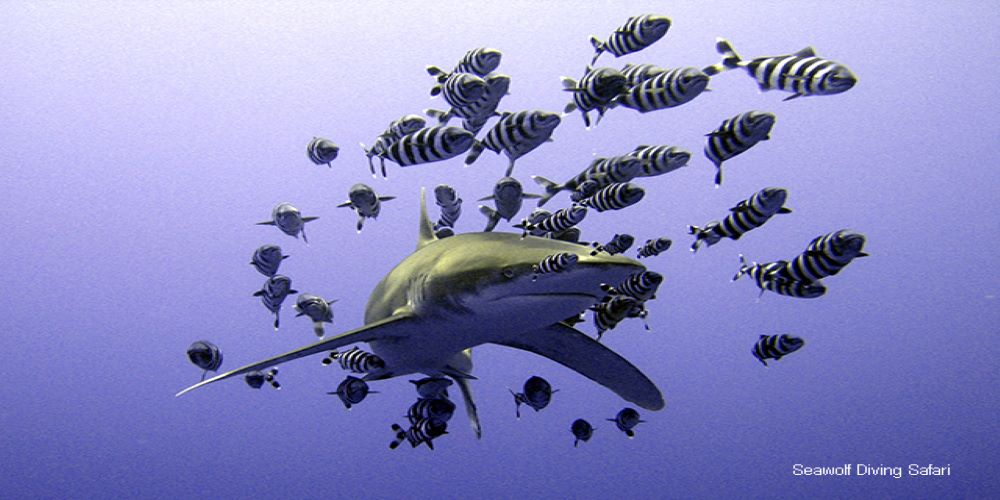
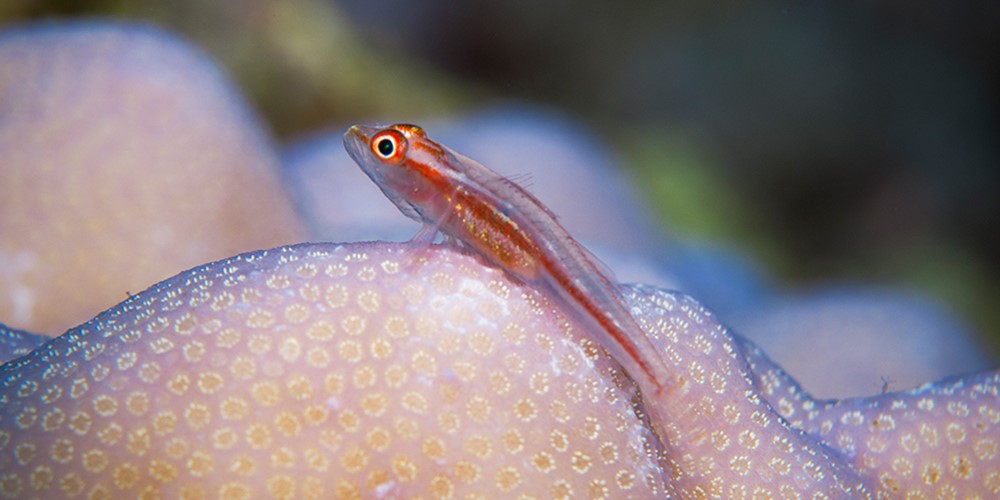

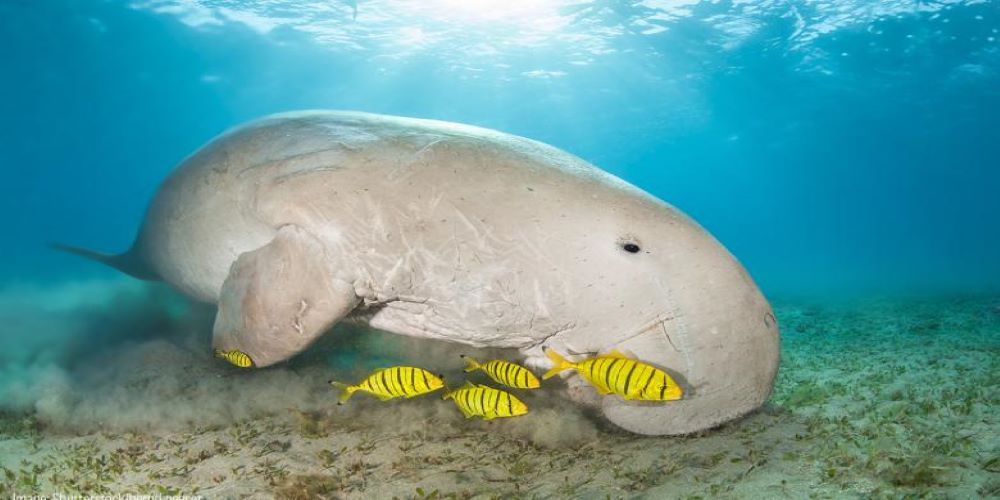
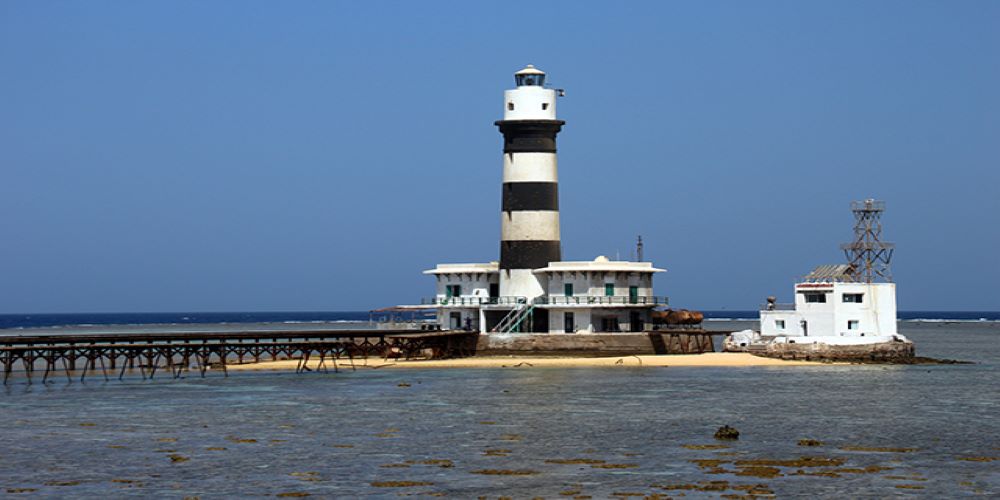
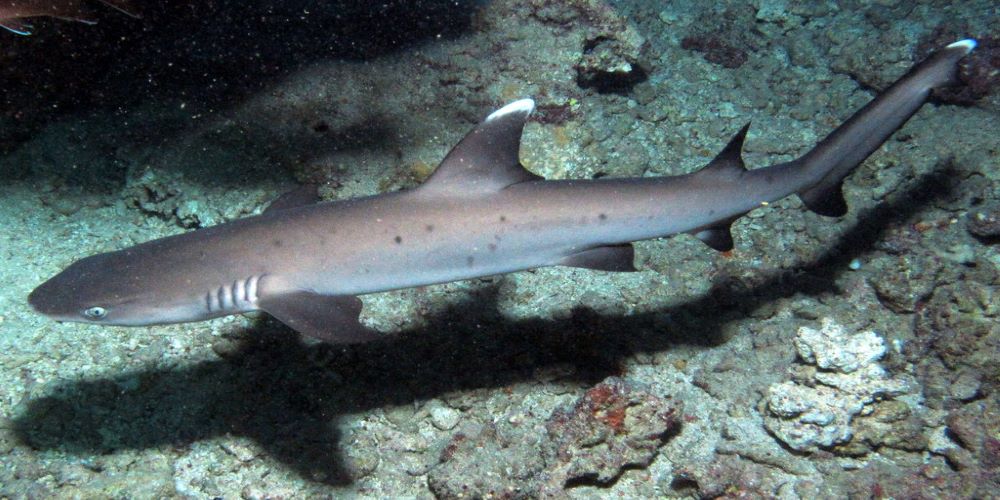
_lg.jpg)
